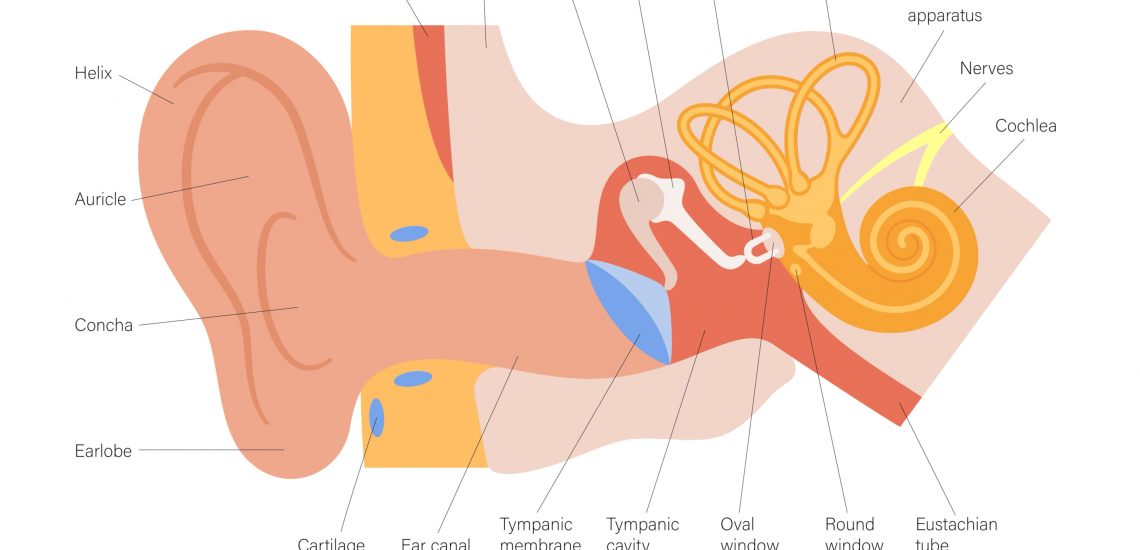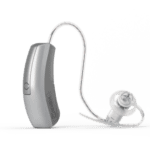Are you tired of dealing with the discomfort and frustrations caused by fluid in your ears? Fear not! This comprehensive guide on how to get rid of fluid in ear will provide you with a wealth of information and practical tips to help you find relief from middle ear fluid. We’ll cover everything from understanding the anatomy and function of your ears to home remedies, over-the-counter medications, and when to seek medical help. So, let’s dive in and begin your journey to relief!
Key Takeaways
- Middle ear fluid is a common issue caused by immune system response, allergies, viral infections or the common cold.
- Home remedies such as popping ears and steam inhalation may provide temporary relief for fluid buildup in the middle ear but professional medical assistance should be sought if symptoms persist.
- Adopting healthy lifestyle habits combined with regular checkups can help prevent complications associated with untreated fluid in the middle ear.
Understanding Middle Ear Fluid
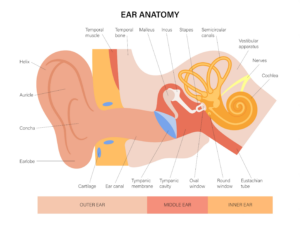
Grasping the concept of middle ear fluid requires a basic understanding of the human ear’s anatomy and function. The human ear consists of the outer, middle, and inner ear, with each part playing a crucial role in the process of hearing. The middle ear houses small bones that capture sound waves, transforming them into vibrations. These vibrations are then converted into signals by the inner ear, which are transmitted to the brain.
Middle ear fluid is a common occurrence that can lead to discomfort, pain, and reduced hearing capacity. The potential causes of fluid accumulation in the middle ear include:
- immune system response
- allergies
- viral infections
- the common cold
Patients experiencing a middle ear infection may present symptoms such as pain, itching, hearing loss, ringing in the ear, dizziness, fever, and discharge containing wax, blood, or pus. In children, ear infections may cause a number of symptoms. These include irritability, difficulty sleeping, tugging or pulling at the ear, delayed speech or language development, and balance problems or clumsiness.
Gently holding and moving the earlobe up and down slowly may help drain fluid from the middle ear at home, but if the fluid is thick, sticky, or blood-stained, it’s recommended to visit an ENT specialist for an accurate diagnosis and appropriate treatment.
Anatomy of the Human Ear
The human ear has three components. They are:
- The outer ear: the visible portion, consisting of the pinna and the ear canal, which directs sound waves into the middle ear.
- The middle ear: the space behind the eardrum, containing small bones that pick up sound waves and convert them into vibrations.
- The inner ear: the innermost part of the ear, which contains the cochlea and is responsible for converting sound vibrations into electrical signals that can be interpreted by the brain.
All these components come together to form the ear. The Eustachian tube, a small tube that connects the middle ear to the throat, plays a crucial role in the health of your ears, as it serves to equalize the pressure between the middle ear and the outside environment.
Inside the innermost part of the ear lies the cochlea and the semicircular canals, responsible for transforming vibrations into signals and sending them to the brain. The Eustachian tube may become blocked or not function properly. As a result, fluid builds up in the middle ear, behind the ear drum. This is known as otitis media with effusion.
Grasping the human ear’s structure is key to pinpointing the causes of fluid accumulation and devising effective strategies to combat it.
Eustachian Tube Function
The Eustachian tube, by enabling fluid drainage from the middle ear and maintaining proper air pressure, is instrumental in preserving our ears’ health. This prevents obstruction and infections that can lead to discomfort and hearing loss. When the Eustachian tube becomes swollen or obstructed due to an infection or irritation, fluid may accumulate in the middle ear, causing various symptoms such as:
- Ear pain or discomfort
- Muffled or reduced hearing
- Feeling of fullness or pressure in the ear
- Tinnitus (ringing or buzzing in the ear)
- Dizziness or imbalance
If you experience any of these symptoms, it is important to consult a healthcare professional for proper diagnosis and treatment.
Popping the ear, a technique that helps open the Eustachian tube, can assist in draining fluid from the middle ear. This simple act can provide temporary relief from the discomfort and pressure associated with fluid buildup. However, if symptoms persist or worsen, it’s vital to seek medical attention to assess the underlying cause and receive appropriate treatment.
Home Remedies for Fluid Drainage
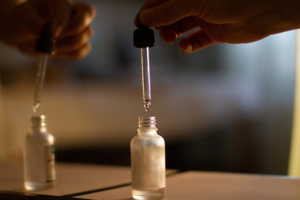
Although comprehending the structure and function of the human ear is crucial, the journey to relief from middle ear fluid often commences with the exploration of home remedies. Techniques such as:
- Popping your ears
- Steam inhalation
- Saltwater gargle
- Using ear drops
can provide temporary relief for fluid buildup in the middle ear. But remember, while these home remedies can be helpful, they may not be a substitute for medical treatment in some cases. Always consult your healthcare provider if symptoms persist or worsen.
Bear in mind, when trying to drain fluid from the middle ear, it is advisable to shun the use of cotton swabs, fingers, or any other objects to poke into the ear. This can cause further irritation or damage to the delicate structures within the ear. Instead, try the various home remedies listed below, and if necessary, seek medical help for an accurate diagnosis and appropriate treatment.
Popping Your Ears
One of the most common methods to alleviate pressure and promote fluid drainage from the middle ear is popping your ears using the Valsalva maneuver. This technique involves covering the affected ear with your palm and pushing and pulling it away from the ear quickly. The Valsalva maneuver triggers the opening of the Eustachian tube, thus permitting fluid to drain.
If the Valsalva maneuver doesn’t provide relief, alternative methods for relieving ear pressure include yawning, chewing, and swallowing. When performing the Valsalva maneuver correctly, it’s expected to experience a slight pressure inside the ear as the maneuver is performed, and a slight pop may be felt or heard when the Eustachian tube opens.
Steam Inhalation
Inhaling steam is another effective home remedy for fluid drainage from the middle ear. The warmth and moisture from the steam can reduce the swelling of the Eustachian tubes, allowing the ear fluid to exit and alleviate the ear fluid affect. Steam inhalation offers several benefits, such as:
- reducing irritation and inflammation in the nasal passages
- clearing congestion in the sinuses, chest, and nasal passages
- providing a natural remedy for cold and congestion symptoms
To perform steam inhalation, fill a bowl with hot, steaming water, and place a towel over your head. Lean over the bowl and inhale the steam for 5-10 minutes. This method can also help with outer ear infection by reducing inflammation and promoting healing. Remember to maintain a safe distance between your face and the bowl of hot water and exercise caution when handling hot water and steam to avoid burns.
Saltwater Gargle
Gargling with saltwater is another home remedy that can help reduce swelling in the Eustachian tube and promote fluid drainage from the middle ear. The saltwater solution creates an inhospitable environment for bacteria, helping to reduce the risk of infection. Here’s how to do it:
- Mix one teaspoon of salt with a cup of warm water. Stir to let the salt dissolve.
- Take a small sip of saltwater and keep your throat closed.
- Tilt your head back gently and gargle with the saltwater for 30 seconds.
- Spit out the saltwater and rinse your mouth with mouthwash for 30 seconds.
- Increase the duration of gargling and mouthwash rinsing to one minute for a deeper cleanse.
In addition to promoting fluid drainage from the middle ear, saltwater gargle offers several benefits, such as:
- Providing relief and preventing infection
- Reducing symptoms of respiratory issues
- Healing mouth ulcers and cold sores
- Removing mucus build-up in the respiratory tract
- Helping in preventing recurrent ear infections
Regular saltwater gargling can provide these benefits.
Ear Drops
Ear drops, both over-the-counter and homemade, may be beneficial for removing fluid from the middle ear. Over-the-counter ear drops often contain isopropyl alcohol and anhydrous glycerine, while homeopathic ear drops may contain pulsatilla, graphite, and sulfur. To use ear drops, follow these steps:
- Gather a clean eye dropper.
- Draw up the solution.
- Test the temperature by placing a few drops on your wrist.
- Lie on your side or tilt your head.
- Place several drops of the solution into your affected ear.
- Remain in this position for five to 15 minutes.
- Place a cotton ball or towel up to the outside of the ear.
- Tilt your head in the opposite direction.
Before resorting to ear drops, particularly if you’re suffering from pain, fever, pus, or a foul smell, it’s crucial to seek advice from a healthcare provider. A doctor may recommend an appropriate treatment plan based on the underlying cause of your symptoms, helping to resolve the fluid buildup and prevent complications.
Over-the-Counter Medications
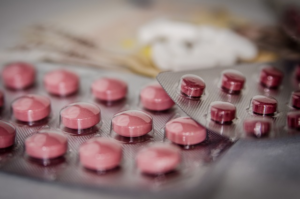
Over-the-counter medications such as anti-inflammatories, decongestants, and antihistamines can, in certain cases, help ease symptoms linked to fluid accumulation in the middle ear. These medications work by reducing inflammation, relieving congestion, and addressing the root cause of the fluid accumulation. It’s important to consult your healthcare provider before using any over-the-counter medications, as they may not be suitable for everyone and may interact with other medications you’re taking.
Handling middle ear fluid requires recognizing that while over-the-counter medications might offer temporary relief, they may not tackle the root cause of the fluid accumulation. Therefore, if your symptoms persist or worsen, it’s crucial to seek medical help for an accurate diagnosis and appropriate treatment.
When to Seek Medical Help
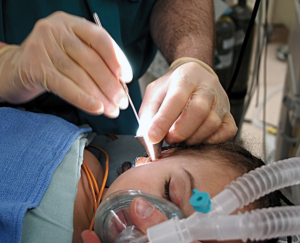
Despite home remedies offering temporary solace for fluid accumulation in the middle ear, recognizing when to seek medical advice is of paramount importance. If home remedies fail to provide relief, or if symptoms such as:
- pain
- fever
- pus
- foul smell
- limited hearing
- swollen lymph nodes
- redness and swelling around the ear
persist, it’s time to consult a healthcare provider. A doctor may conduct a physical examination to help identify the source of your symptoms. They may also suggest additional tests or imaging studies for further investigation and create a suitable treatment plan.
Seeking medical help not only ensures an accurate diagnosis but also allows for the appropriate treatment of your condition, minimizing the risk of complications and providing the best possible outcome for you. Don’t hesitate to reach out to your healthcare provider if you’re unsure about your symptoms or if your condition worsens.
Medical Treatments for Persistent Fluid in the Middle Ear
If fluid accumulation in the middle ear continues unabated despite home remedies and over-the-counter medications, resorting to medical treatments might be the next step. These treatments may include pain management, antibiotic therapy, or surgical measures like ear tubes or myringotomy. Antibiotic therapy is particularly important if the fluid in the middle ear is of bacterial origin. Myringotomy, a surgical procedure in which a small hole is created in the eardrum to facilitate fluid drainage, may also be recommended in certain cases.
Obtaining medical assistance is crucial in averting and treating complications associated with persistent middle ear fluid. Consulting a physician ensures:
- An accurate diagnosis
- The appropriate treatment plan
- A better outcome
- Improved quality of life
Preventing Fluid Buildup in the Middle Ear
To prevent fluid accumulation in the middle ear, it is important to:
- Lead a healthy lifestyle
- Uphold good hygiene
- Exercise regularly
- Ensure sufficient rest
- Undergo regular health check-ups
Consuming a nutritious diet, engaging in regular physical activity, and ensuring adequate rest can contribute to a healthy lifestyle and help prevent fluid accumulation in the middle ear. Regular ear cleaning, avoiding secondhand smoke exposure, and maintaining ear dryness are effective hygiene practices to prevent fluid accumulation in the middle ear.
Exercises that promote increased circulation and bolster the immune system can be beneficial in preventing fluid buildup in the middle ear. Additionally, adequate rest and regular check-ups can help in avoiding fluid accumulation in the middle ear. By following these tips and maintaining a healthy lifestyle, you can minimize the risk of fluid buildup and its associated complications.
Complications of Untreated Fluid in the Middle Ear
Ignoring fluid accumulation in the middle ear could lead to hearing loss, balance problems, and potentially serious infections. Untreated serous otitis media, for example, may result in damage to bone and cartilage, as well as hearing loss. It’s imperative to seek medical assistance in order to prevent and treat any potential complications associated with untreated fluid in the middle ear.
Seeking medical help not only provides an accurate diagnosis and appropriate treatment but also minimizes the risk of complications and ensures the best possible outcome for your condition. Don’t hesitate to reach out to your healthcare provider if you’re experiencing fluid buildup in the middle ear, as timely intervention is crucial for preventing long-term damage and promoting overall ear health.
Summary
In conclusion, finding relief from middle ear fluid doesn’t have to be a daunting task. This comprehensive guide has provided you with essential information on understanding the anatomy and function of the human ear, as well as practical tips for home remedies, over-the-counter medications, and when to seek medical help. By incorporating these strategies into your daily routine and seeking medical help when necessary, you can effectively manage fluid buildup in the middle ear and maintain optimal ear health. So, take action today and experience the relief you deserve!
Check out our Ear To Hear Hearing Aid Centers for affordable pricing, convenient locations, and award-winning service.
Frequently Asked Questions
How do I get rid of fluid in my inner ear?
Yawn, chew, or swallow to pop your ears open and allow fluid to drain. You can also try the Valsalva Maneuver, jiggling your earlobe, using gravity, creating a vacuum, using a blow dryer, trying ear drops or sprays, trying more water, inhaling steam, or gargling with saltwater for safe fluid drainage from the inner ear.
Can fluid in ear go away on its own?
Fluid in the ear often goes away on its own in weeks or months, especially after a cold or ear infection. OME is typically not life-threatening and tends to go away without treatment, but if symptoms persist after 3 months, it’s advisable to get further testing.
Why won’t the fluid drain from my ear?
The eustachian tube, which connects the middle ear to the throat, can become blocked due to colds, allergies, or other conditions. This can cause fluid to build up behind the eardrum and block drainage, leading to infection and painful pressure behind the eardrum.
What causes fluid in the ear in adults?
Fluid in the ear in adults is usually caused by irritation of the Eustachian tube or swelling around it which stops fluid from draining, allowing bacteria and viruses to grow. It can also be a sign of an ear infection, injury, damage to the eardrum or a foreign body.
What are some common home remedies for fluid drainage from the middle ear?
Popping your ears, inhaling steam, doing a saltwater gargle, and using ear drops are some common home remedies that may help drain fluid from the middle ear.

